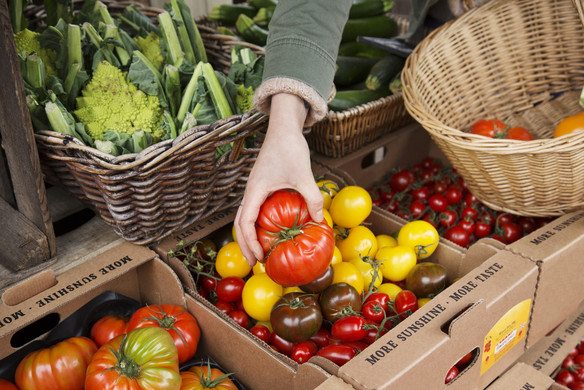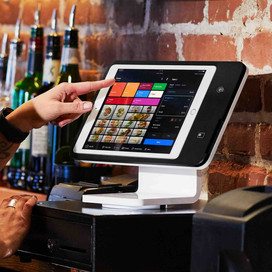Table of contents
In a 2021 survey by the National Restaurant Association, 95% of restaurants reported experiencing supply delays or shortages of key food or beverage items in recent months. Restaurant operators may be looking for a way to shorten their supply chains, maintain inventory, and deliver a consistent customer experience. In a competitive market, they’re also likely looking for ways to draw more diners through their front door.
One way to accomplish both objectives is by adding locally sourced foods to your menu. Instead of hoping shipments from other states or countries make it to your restaurant on time, locally sourced food has fewer miles to travel. In addition, featuring local foods can attract new customers. According to the USDA, local food systems have increasingly grown in popularity over the past couple of decades, and the number of farmers markets has nearly tripled due to consumer perceptions of their freshness and quality, environmental benefits, and a desire to support the local economy.
What does “locally sourced” mean?
The 2008 Farm Bill defined locally or regionally produced agricultural food products as those transported less than 400 miles from the product’s origin. However, today’s interpretation brings the circle much closer and often refers to products obtained less than 150 miles from where they’re grown or made.
If you have a green thumb, you could tap into hyperlocal food sourcing, growing your own produce on-site or nearby for your restaurant. Hyperlocal sourcing could be a good choice if your dishes include unique or hard-to-find ingredients. And having more control over the product will give you better control over your menu.
While produce and meat are commonly sourced local foods, the concept covers many items. For example, you can find cheese, baked goods, craft beers, spices, honey, and much more from local manufacturers. The items available will likely depend on where you’re located and regional trends.
The advantages of sourcing locally
Serve the freshest dishes
One of the best benefits of using locally sourced foods is freshness. According to Foodwise, a nonprofit organization that promotes local food, traditionally grown produce transported over long distances is picked when it’s not yet ready and then gas ripened, or the food is treated with preservatives to keep it stable. On the other hand, local foods can mature naturally, making them more flavorful. And you can tap into more organic options since they don’t have to travel a long distance.
Support your local economy
Buying from nearby businesses puts money back into your community and local economy. By supporting your local farmers, you help them increase their business volume. And you can help cultivate relationships between local manufacturers and the restaurant community, providing business owners with another stream of revenue for their goods.
Improve sustainability efforts
Using locally sourced foods also improves your sustainability efforts. Shorter transportation routes reduce the consumption of fossil fuels and gas emissions. And since the delivery travels a shorter distance, the foods often require less packaging.
Attract like-minded customers
Finally, you can attract new customers when you use locally sourced foods. According to the 2020 National Restaurant Association Industry Report, 76% of adults said they are more likely to visit a restaurant that offers locally sourced food. You can set yourself apart from the competition by creating special menus based on items in step with nature.
Disadvantages of sourcing locally
While the benefits are broad, there are some disadvantages. First, locally sourced food can be more expensive than imported food since local producers don’t have the efficiencies and systems that larger food conglomerates do. You may need to raise your menu prices as a result. And you’ll have to do more due diligence since local, smaller farms may not be regulated as closely as national producers.
Locally sourced produce may spoil faster because it lacks the preservatives other foods are treated with to survive a cross-country trip. This makes your ordering process critical to avoid waste. In addition, your selection may be limited to what’s in season. And if your region has little rain or a pest outbreak, you may experience bad harvests or yields that could reduce the availability of certain crops. You will need the ability to adjust your menu in response to what’s available.
Where to find local suppliers
There are a few ways to find local farmers and food manufacturers — an easy way to meet and establish relationships is by visiting your local farmers market. A visit allows you to sample their products and ensure these smaller suppliers can meet your restaurant’s standards. You could also network with farm-to-table restaurants in your area to learn about the local suppliers they use and like. This approach can provide helpful feedback on who to contact and who to avoid.
In addition to buying directly from the farmer or manufacturer, many regions have small or medium-sized food hubs that source from local farms and sell wholesale. The USDA has a local food portal to help connect you with farmers and food hubs.
How to add locally sourced items
If you’re new to using local products, start small by adding a few items to your list of specials. Instruct your wait staff to highlight the new things, sharing their local origins with diners. During a test run, make it a point to collect feedback from customers. Then based on sales and input your wait staff receives from diners, decide which products deserve a permanent place on your menu. If locally sourced foods are a hit with your clientele, continue to add to your offerings with more specials and seasonal menus.
Promote locally sourced
In addition to promoting dishes inside your restaurant, widen your reach by creating marketing campaigns to let customers know you serve locally sourced foods. For example, highlight local farmers and food manufacturers in your social media campaigns. Hold special events with the farmer or food manufacturer. And design cross-promotional partnerships by having the farmer advertise that their goods are featured at your restaurant.
Then be sure to promote your dishes to drive traffic. Since many of the items will be seasonal, you can encourage customers to return by offering dishes that have limited availability. Also, having an evolving menu will help maintain your diners’ interest. Encourage diners to follow you on social media or sign up for your email newsletter or loyalty program so that they stay in the loop when your new dishes are released.
Using locally sourced foods can provide you and your restaurant with a bounty of benefits and opportunities. You’ll not only expand your offerings, but you’ll support your community as well.
![]()











